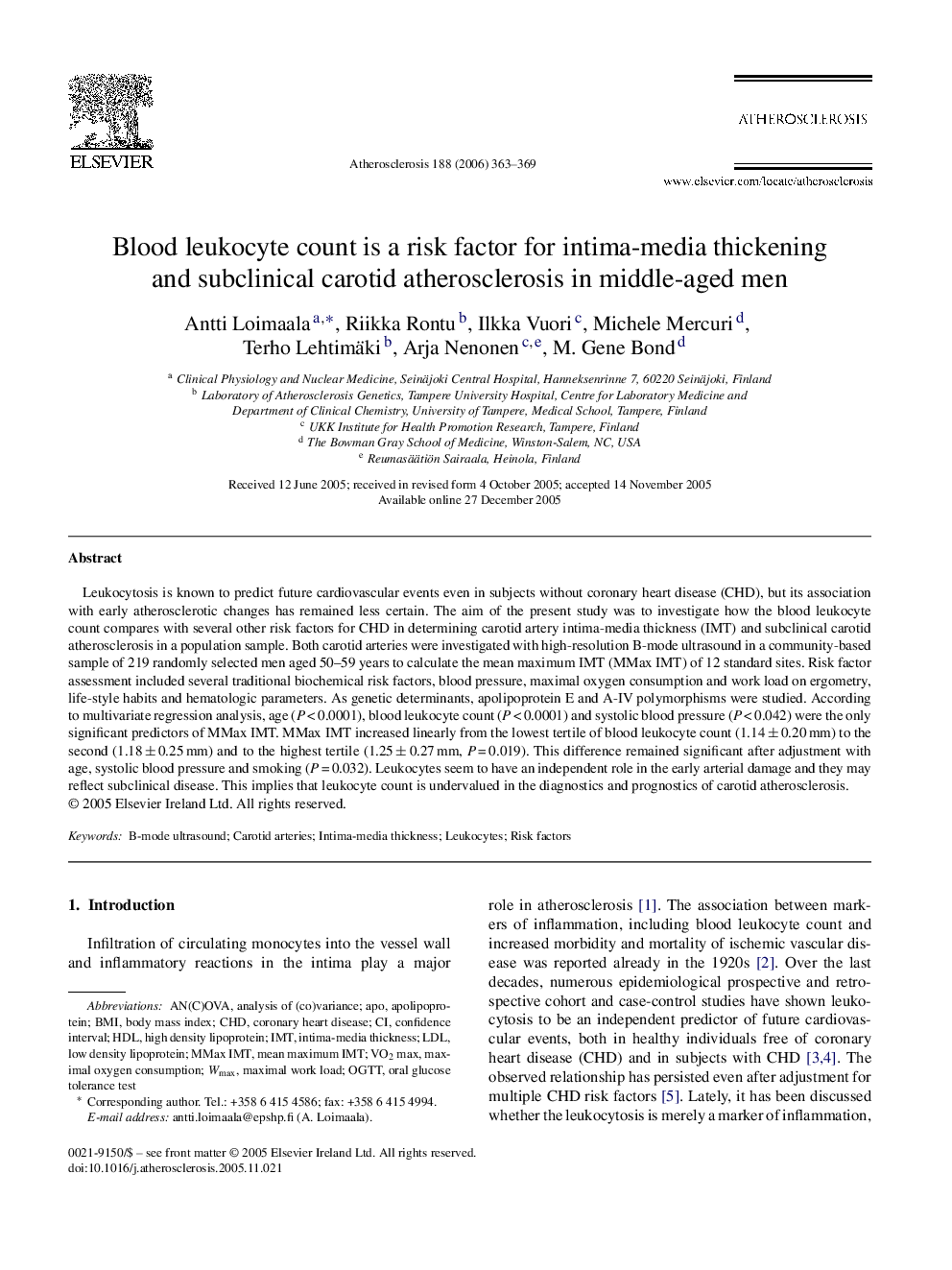| Article ID | Journal | Published Year | Pages | File Type |
|---|---|---|---|---|
| 2895228 | Atherosclerosis | 2006 | 7 Pages |
Leukocytosis is known to predict future cardiovascular events even in subjects without coronary heart disease (CHD), but its association with early atherosclerotic changes has remained less certain. The aim of the present study was to investigate how the blood leukocyte count compares with several other risk factors for CHD in determining carotid artery intima-media thickness (IMT) and subclinical carotid atherosclerosis in a population sample. Both carotid arteries were investigated with high-resolution B-mode ultrasound in a community-based sample of 219 randomly selected men aged 50–59 years to calculate the mean maximum IMT (MMax IMT) of 12 standard sites. Risk factor assessment included several traditional biochemical risk factors, blood pressure, maximal oxygen consumption and work load on ergometry, life-style habits and hematologic parameters. As genetic determinants, apolipoprotein E and A-IV polymorphisms were studied. According to multivariate regression analysis, age (P < 0.0001), blood leukocyte count (P < 0.0001) and systolic blood pressure (P < 0.042) were the only significant predictors of MMax IMT. MMax IMT increased linearly from the lowest tertile of blood leukocyte count (1.14 ± 0.20 mm) to the second (1.18 ± 0.25 mm) and to the highest tertile (1.25 ± 0.27 mm, P = 0.019). This difference remained significant after adjustment with age, systolic blood pressure and smoking (P = 0.032). Leukocytes seem to have an independent role in the early arterial damage and they may reflect subclinical disease. This implies that leukocyte count is undervalued in the diagnostics and prognostics of carotid atherosclerosis.
